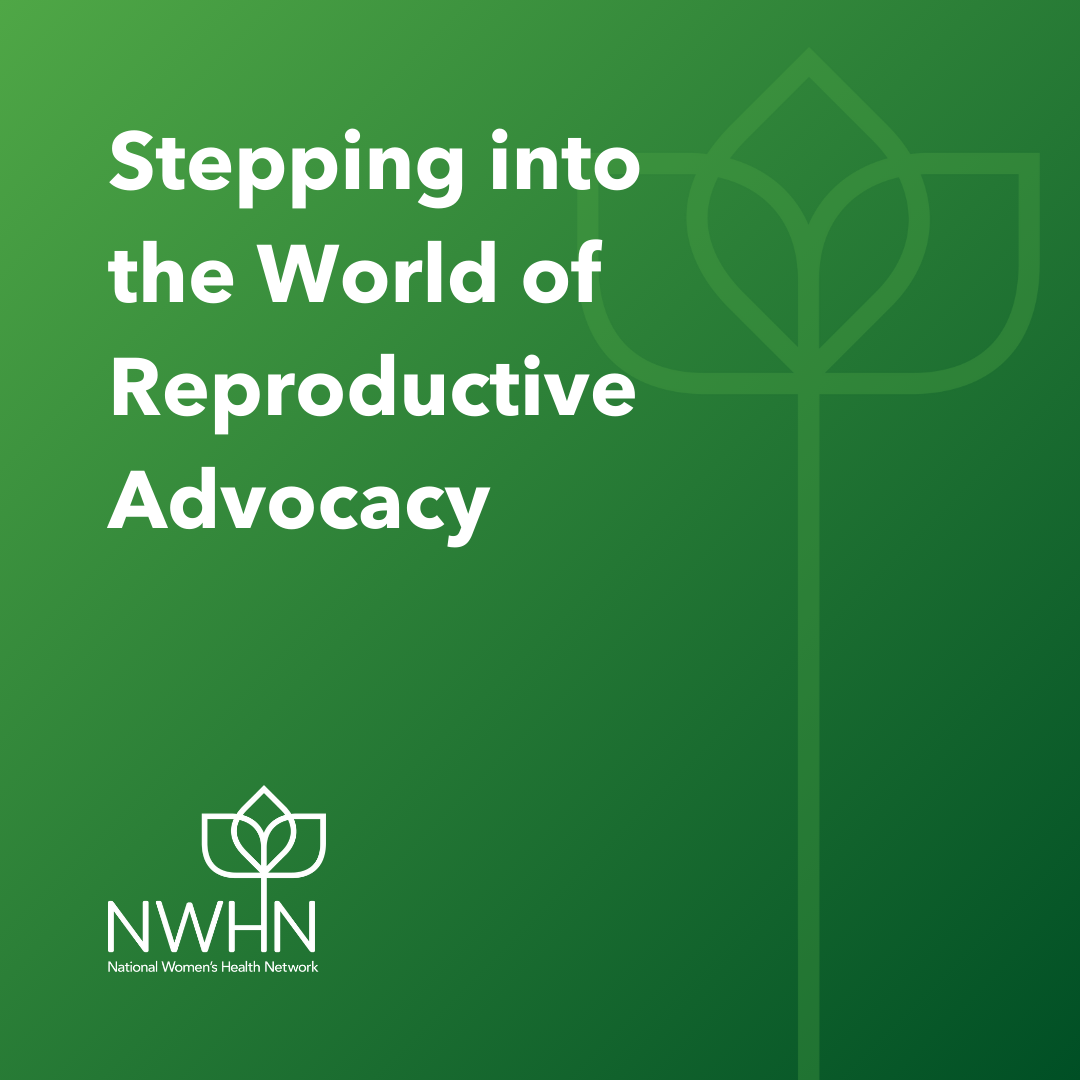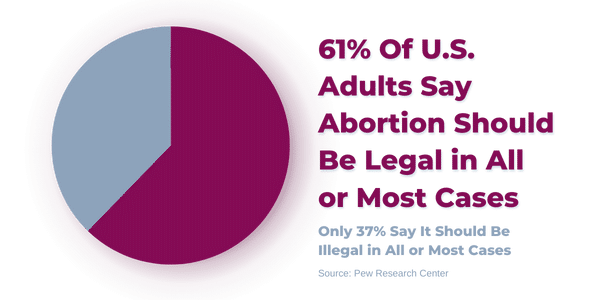
Policy Updates
Stepping into the World of Reproductive Advocacy
July 23, 2024
Insights and Inspiration from my NWHN Internship As an undergraduate studying public policy and global health, my internship at the National Women’s Health…
Deep Dive Articles, Health Info, Policy Updates
Publication Date: August 17, 2023
By: Kristen Batstone

On April 7, a federal judge reversed theFood and Drug Administration (FDA)’s approval of a safe and effective abortion drug called Mifepristone. Judge Kacsmaryk issued a partial stay to pull Mifepristone from the market and reinstated outdated and medically unnecessary restrictions on the medication while the FDA continues to litigate the case. This proceeding has potentially damning consequences for access to abortion care and larger implications for the FDA’s authority. The National Women’s Health Network will continue to advocate for a path forward for abortion access, free from stigma or the threat of criminalization. As this case continues to progress, we urge people to consult Plan C, the Miscarriage and Abortion Hotline, or Aid Access for up-to-date information on access from medical experts.
Mifepristone was first approved by the FDA more than twenty years ago in September 2000. In twenty years ago, the FDA approved the first generic version of Mifepristone after determining that medication abortion is a safe and effective way to terminate a pregnancy. In the United States, the “abortion pill” is the common phrase used for two different drugs- Mifepristone and Misoprostol- to end a pregnancy within the first trimester. According to Planned Parenthood, the “abortion pill” is the best method to terminate a pregnancy up to 11 weeks (2 and a half months).
The two drugs work in tandem to induce an abortion. Mifepristone blocks the hormone progesterone and subsequently breaks down the uterine lining and prevents pregnancy. Immediately following Mifepristone or up to 48-hours later, a patient can take Misoprostol. Misoprostol causes the breaks down the uterine lining, which triggers heavy bleeding and cramping similar to the symptoms experienced during a miscarriage.
Mifepristone is also used by physicians to medically manage a miscarriage or manage late-stage pregnancies where the fetus has died before birth. Not only can these outcomes be incredibly traumatic for pregnant people, they come with some danger. Mifepristone mitigates the risks of additional health challenges after miscarriage or fetus death by emptying the uterus in a safe and timely manner. The safety and importance of Mifepristone cannot be overstated. Mifepristone has earned a nearly perfect safety record (99%), which is higher than many over-the-counter drugs such as Acetaminophen (Tylenol). Due to its convenience and high efficacy rate (95-99%), nearly one in three people seeking an abortion outside of a hospital choose medication abortion. Abortion is an essential part of women’s health care, and Mifepristone is a medically necessary drug to manage pregnancies that come to an end.
Earlier this year, the Alliance for Hippocratic Medicine sued the FDA on behalf of anti-abortion advocates to achieve a nationwide ban on medication abortion. This is the latest effort to chip away access to abortion after the Dobbs decision overturned Roe v. Wade and stripped away nearly 40 years of legal precedent that protected the right to an abortion. The Alliance for Hippocratic Medicine made meritless accusations that the FDA did not follow its own protocol in the approval of Mifepristone and urged the FDA to reinstate restrictions on medication abortion that were previously loosened after experts determined them to be medically unnecessary. Worst of all, they asked the court to invoke the Comstock Act, a criminal law that prohibits the mailing of “obscene materials” to prevent the FDA and medical providers from mailing the abortion pill.
This law is not only wildly out of step with the public’s desires, but it has not been enforced since 1965 when the landmark Supreme Court case Griswold v. Connecticut found it unconstitutional to restrict access to birth control.

Despite the suit’s meritless arguments, Judge Kacsmaryk sided with the anti-abortion advocates. How did this happen? Step by step; the makeup of the federal courts shifted steadily during the Trump Administration to be more conservative. The former president strategically appointed political activist judges to promote an anti-abortion agenda and achieve a nationwide abortion ban.
So far, this effort has been successful.
Judge Kacsmaryk in particular has a reputation for championing anti-abortion groups and has received widespread criticism for making judicial decisions based on ideology rather than the law. When abortion supporters heard that this case was going to his desk, they knew that this would be the likely outcome. However, on the same day Judge Kacsmaryk issued his decision in Texas, another medication abortion case was decided in Washington. A different federal judge ordered the FDA to maintain the availability of mifepristone in the 17 states and the District of Columbia that brought a case against the FDA. In other words, this federal judge ruled the exact opposite of Judge Kacsmaryk on the same issue. The conflicting decisions reflect the current polarized reality of abortion access politics in the United States.
The lower court’s decision was appealed to the 5th Circuit court of Appeals in April, and the latest ruling was not decided until Wednesday, August 16th. Ultimately, the appeals court decided that Alliance for Hippocratic Medicine did not meet the statute of limitations to challenge the FDA’s approval of Mifepristone and its generic version. However, the court did side with anti-abortion advocates in its decision to rollback recent guidance by FDA to ease restrictions on Mifepristone, allowing the drug to be dispensed through mail and retail pharmacies. There was some disagreement among the panel of judges, with Judge Ho (a staunch opponent of abortion rights) writing a concurring opinion that argued in favor of a more extreme ruling that would overturn the FDA’s approval of Mifepristone entirely.
Despite the appeals court’s decision, Mifepristone remains available via mail or at retail pharmacies. Their ruling will not immediately go into effect due to a stay issued by the Supreme Court on April 21. It is likely that this case will be appealed to the Supreme Court, where the Supreme Court will decide whether to let the appeals court’s ruling stand. Regardless of the Supreme Court’s decision, women will continue to self-manage their abortion care with the help of their friends, families and health care providers. If the court sides with anti-abortion advocates and restricts access to Mifepristone, women will still have access to Misoprostol which is safe and effective when used alone. Women have always had abortions and will continue to do so regardless of courts and politics, and the NWHN will stand by them, and abortion providers come what may.
The National Women’s Health Network will continue to advocate for a path forward for abortion access, free from stigma or the threat of criminalization. As this case continues to progress, we urge people to consult Plan C, the Miscarriage and Abortion Hotline, or Aid Access for up-to-date information on access from medical experts.
